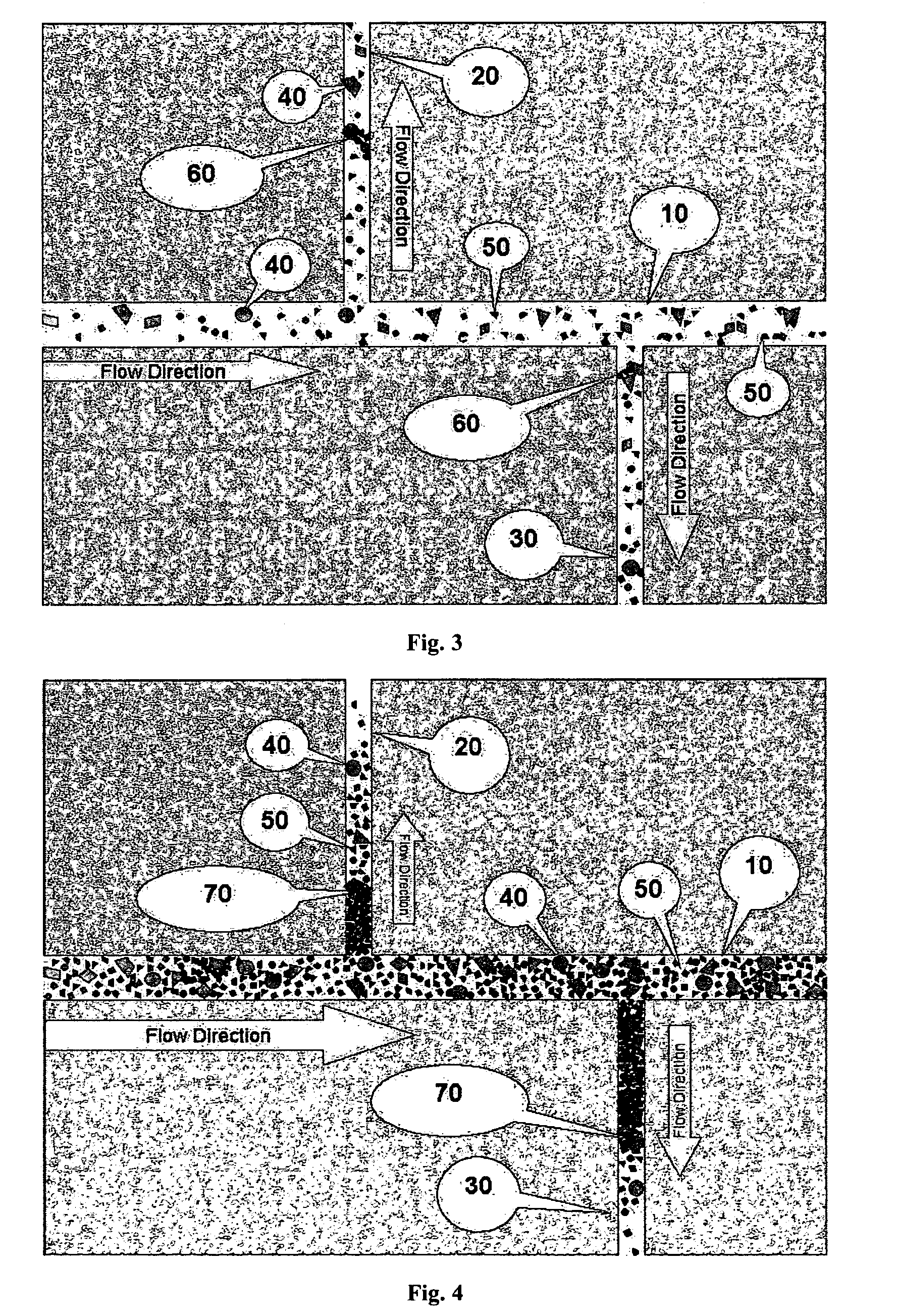Method of enhancing hydraulic fracturing using ultra lightweight proppants
a technology of hydraulic fracturing and proppants, which is applied in the direction of fluid removal, borehole/well accessories, chemistry apparatus and processes, etc., can solve the problems of formation being subjected to hydraulic fracturing, and achieve the effect of enhancing the productivity of formation
- Summary
- Abstract
- Description
- Claims
- Application Information
AI Technical Summary
Benefits of technology
Problems solved by technology
Method used
Image
Examples
example 1
[0039] Conductivity tests were performed according to a modified API RP 61 (1st Revision, Oct. 1, 1989) using an API conductivity cell. Conductivity tests demonstrate the permeability contrast that remains in the natural fractures as a result of this invention. The proppant sample was loaded into the cell between Ohio sandstone wafers and closure stress applied to the proppant using a DAKE hydraulic press having a ROSEMOUNT differential transducer (#3051C) and controlled by a CAMILE controller. Also employed in the testing was a CONSTAMETRIC 3200 constant rate pump which was used to flow deionized water through each particulate sample.
[0040] The proppant was LiteProp™ 125, a lightweight proppant comprising ground nut shells coated with protective or hardening coating and having a size of about 45 / 65 mesh, available from BJ Services Company. Experimental parameters for the LiteProp™ 125 evaluation are shown in Tables I-III below:
TABLE ICell #013TopWidth Core Top (cm)8.940Fluid 0 ...
example 2
[0044] The procedure of Example 1 was repeated to illustrate diverting in the natural fracture, except a slot flow was used in place of the normal flow in order to make the core available. A 7 cP initial or baseline slurry of 2 weight % KCl slickwater containing 10 lbs. of guar was put into a piston accumulator and was then injected into the cell. The initial fracture permeability averaged 12.8 Darcies at an average rate of 27.3 ml / min. See Table IV.
[0045] A diverting stage consisting of the baseline slurry and 1 lb. of the 40 / 55 mesh LiteProp™ 125 was then injected at an average rate of 52.9 ml / min. Flow was diverted in the fracture as illustrated by the differential in pressure, DP. At 315 DP (the highest recordation point for the equipment), the fracture was completely shut off.
[0046] Lastly, a third pump was employed using the baseline slurry at an average rate of 16.8 ml / min. The fracture permeability averaged 6.7 Darcies.
[0047] Table V is a compilation of readings taken at ...
PUM
 Login to View More
Login to View More Abstract
Description
Claims
Application Information
 Login to View More
Login to View More - R&D
- Intellectual Property
- Life Sciences
- Materials
- Tech Scout
- Unparalleled Data Quality
- Higher Quality Content
- 60% Fewer Hallucinations
Browse by: Latest US Patents, China's latest patents, Technical Efficacy Thesaurus, Application Domain, Technology Topic, Popular Technical Reports.
© 2025 PatSnap. All rights reserved.Legal|Privacy policy|Modern Slavery Act Transparency Statement|Sitemap|About US| Contact US: help@patsnap.com



